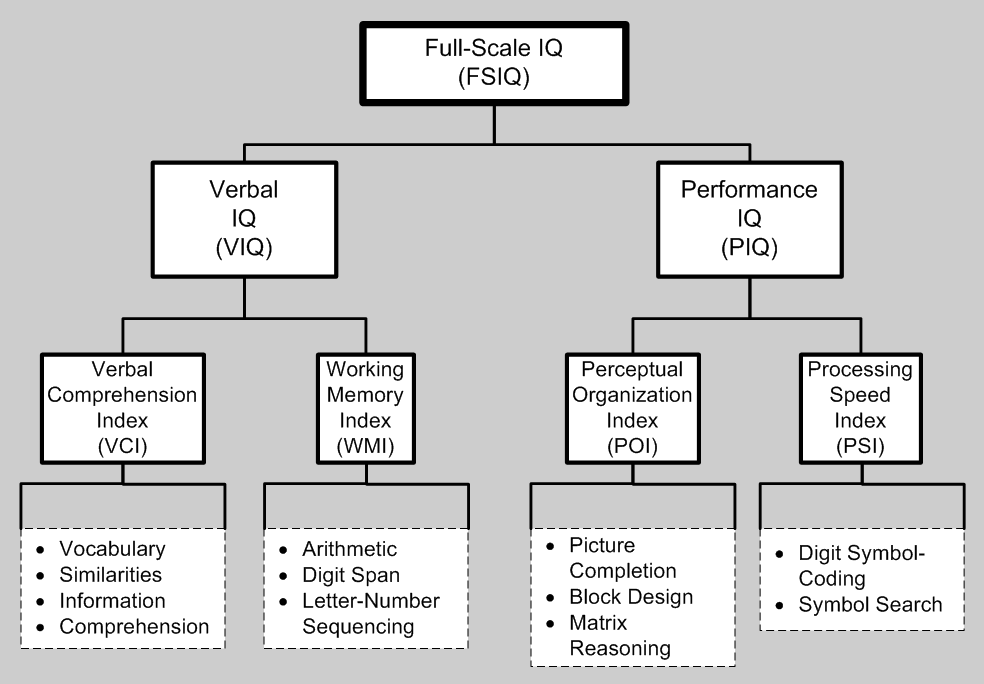|
Wechsler Scales
Wechsler Scales may refer to: * Wechsler Adult Intelligence Scale * Wechsler Individual Achievement Test * Wechsler Intelligence Scale for Children * Wechsler Memory Scale * Wechsler Preschool and Primary Scale of Intelligence * Wechsler Test of Adult Reading {{dab ... [...More Info...] [...Related Items...] OR: [Wikipedia] [Google] [Baidu] |
Wechsler Adult Intelligence Scale
The Wechsler Adult Intelligence Scale (WAIS) is an IQ test designed to measure intelligence and cognitive ability in adults and older adolescents. The original WAIS (Form I) was published in February 1955 by David Wechsler, as a revision of the Wechsler–Bellevue Intelligence Scale, released in 1939. It is currently in its fourth edition (''WAIS-IV'') released in 2008 by Pearson, and is the most widely used IQ test, for both adults and older adolescents, in the world. History The WAIS is founded on Wechsler's definition of intelligence, which he defined as "... the global capacity of a person to act purposefully, to think rationally, and to deal effectively with his environment." He believed that intelligence was made up of specific elements that could be isolated, defined, and subsequently measured. However, these individual elements were not entirely independent, but were all interrelated. His argument, in other words, is that general intelligence is composed of various speci ... [...More Info...] [...Related Items...] OR: [Wikipedia] [Google] [Baidu] |
Wechsler Individual Achievement Test
{{unref, date=November 2018 The Wechsler Individual Achievement Test Second Edition (WIAT-II; Wechsler, 2005) assesses the academic achievement of children, adolescents, college students and adults, aged 4 through 85. The test enables the assessment of a broad range of academics skills or only a particular area of need. The WIAT-II is a revision of the original WIAT (The Psychological Corporation), and additional measures. There are four basic scales: Reading, Math, Writing and Oral Language. Within these scales there is a total of 9 sub-test scores. History The first WIAT was published in 1992 and it was standardised in UK and published as the word, "WOND and WOLD". It was revised in 2001 and followed by the UK version in 2005. Each revision has brought with it several updates and changes. The WIAT-II contains the basic contacademically. There are a small number of differences made between the versions of the subtests in the UK and US. These include changes in the picture items, re ... [...More Info...] [...Related Items...] OR: [Wikipedia] [Google] [Baidu] |
Wechsler Intelligence Scale For Children
The Wechsler Intelligence Scale for Children (WISC) is an individually administered intelligence test for children between the ages of 6 and 16. The Fifth Edition (WISC-V; Wechsler, 2014) is the most recent version. The WISC-V takes 45 to 65 minutes to administer. It generates a Full Scale IQ (formerly known as an intelligence quotient or IQ score) that represents a child's general intellectual ability. It also provides five primary index scores, namely Verbal Comprehension Index, Visual Spatial Index, Fluid Reasoning Index, Working Memory Index, and Processing Speed Index. These indices represent a child's abilities in discrete cognitive domains. Five ancillary composite scores can be derived from various combinations of primary or primary and secondary subtests. Five complementary subtests yield three complementary composite scores to measure related cognitive abilities. Technical papers by the publishers support other indices such as VECI, EFI, and GAI (Raiford et al., 2015). Va ... [...More Info...] [...Related Items...] OR: [Wikipedia] [Google] [Baidu] |
Wechsler Memory Scale
The Wechsler Memory Scale (WMS) is a neuropsychological test designed to measure different memory functions in a person. Anyone ages 16 to 90 is eligible to take this test. The current version is the fourth edition (WMS-IV) which was published in 2009 and which was designed to be used with the WAIS-IV. A person's performance is reported as five Index Scores: Auditory Memory, Visual Memory, Visual Working Memory, Immediate Memory, and Delayed Memory. The WMS-IV also incorporates an optional cognitive exam (Brief Cognitive Status Exam) that helps to assess global cognitive functioning in people with suspected memory deficits or those who have been diagnosed with a various neural, psychiatric and/or developmental disorders. This may include conditions such as dementias or mild learning difficulties. There is clear evidence that the WMS differentiates clinical groups (such as those with dementias or neurological disorders) from those with normal memory functioning and that the primary ... [...More Info...] [...Related Items...] OR: [Wikipedia] [Google] [Baidu] |
Wechsler Preschool And Primary Scale Of Intelligence
The Wechsler Preschool and Primary Scale of Intelligence (WPPSI) is an intelligence test designed for children ages 2 years 6 months to 7 years 7 months developed by David Wechsler in 1967. It is a descendant of the earlier Wechsler Adult Intelligence Scale and the Wechsler Intelligence Scale for Children tests. Since its original publication the WPPSI has been revised three times in 1989, 2002, (followed by the UK version in 2003) and 2012. The current version, WPPSI–IV, published by Pearson Education, is a revision of the WPPSI-R (Wechsler, 1989) and the WPPSI-III (Wechsler, 2002). It provides subtest and composite scores that represent intellectual functioning in verbal and performance cognitive domains, as well as providing a composite score that represents a child’s general intellectual ability (i.e., Full Scale IQ). History The original WPPSI (Wechsler, 1967) was developed as an intelligence measure for 4-6:6yr olds in response to an increasing need for the assessment of pr ... [...More Info...] [...Related Items...] OR: [Wikipedia] [Google] [Baidu] |
